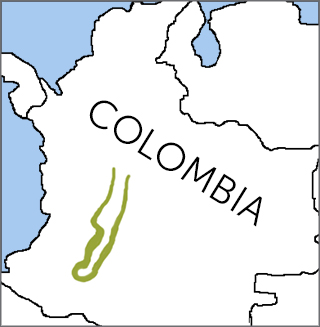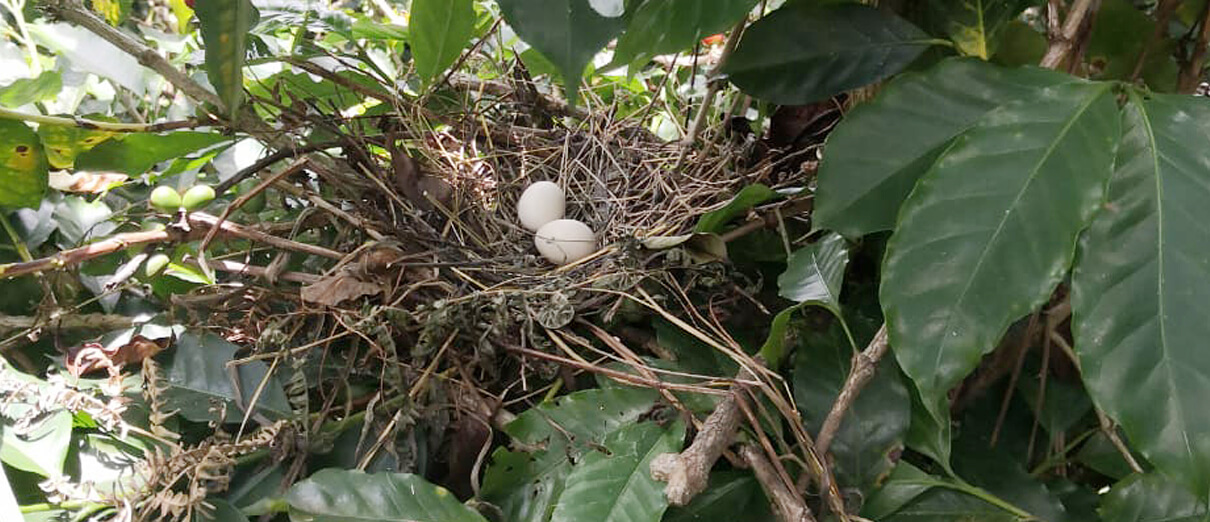
Tolima Dove range map by ABC.
Unlike the widespread Mourning Dove, the shy, forest-loving Tolima Dove can only be found in a small part of one country — specifically, along the headwaters of the Río Magdalena, in the Andes Mountains of western Colombia. This plump, pale-eyed dove can be identified by its reddish-purple neck and breast, gray crown, and buff-colored belly. The bird gets its common name from the Tolima Department that lies west of the country's capital Bogotá. Its genus name Leptotila combines the Ancient Greek words leptos meaning "delicate" or "slender" with ptilon, which means "feather." This refers to the narrowed tenth primary flight feather that is a characteristic of all species in this genus.
The towering Andes, where this dove is found, is well-known for high levels of endemism — where isolated animal populations eventually evolve into separate species that occur in one small range and nowhere else. The Tolima Dove shares its limited range with another bird that probably evolved under similar circumstances.
Uncommon Neighbors
The Tolima Dove shares parts of its limited range in the mountains of Colombia with another uncommon, local species, the Yellow-headed Brushfinch. It is a close relative of Ecuador's Pale-headed Brushfinch but is not as scarce. ABC is working with in-country partners to conserve all three of these localized species.
A Unique Coo in Colombia's Andes
The Tolima Dove is found at altitudes between 4,000 and 8,000 feet on the eastern slope of Colombia's Central Andes and also on the western slope of the Eastern Andes, where it is more scarce.
This bird can often be detected by its distinctive vocalization, a slow-paced series of low, loud coos that sound roughly like: “Whoa-ooh!”
(Audio: Ross Gallardy, XC353936. Accessible at www.xeno-canto.org/353936)
Forest Gardeners
The Tolima Dove forages on the ground, gleaning fallen seeds, fruit, and sometimes insects. Like the Channel-billed Toucan and the Critically Endangered Blue-billed Curassow, another Colombian endemic, the Tolima Dove acts as a seed disperser when it eats fruit and then excretes the seeds. In this way, these birds and many other species are "forest gardeners" that help maintain native vegetative cover. The Tolima Dove will occasionally feed on corn and beans in agricultural areas, which may have led to the species being labeled a pest and hunted in some areas.
This dove breeds from March through August, nesting within the dense cover of forests and forest borders. Nests are built on the ground or low in shrubs. Although the Tolima Dove is “technically” a forest species, it adapts well to agricultural landscapes, nesting in coffee bushes and feeding on seeds in disturbed areas. This uncommon species can also be observed in cacao groves, orchards, and croplands, as long as there are adjacent patches of forest or secondary vegetation. Unfortunately, part of the Tolima Dove's breeding season coincides with the time of the coffee harvest, so nests within coffee plantations are sometimes accidentally destroyed.

Tolima Dove nest by Ledis Arango
A Conservation Twofer
Habitat loss and degradation are the biggest threats to the Tolima Dove. The Colombian conservation organization SELVA estimates that no more than 2 percent of the dove's range is currently within existing protected areas.
ABC is working with SELVA to create a conservation strategy for the Tolima Dove that includes: incentivizing the adoption of diverse agroforestry practices; maintaining habitat corridors within the dove's range; educating local people about the species; and continuing to gather information on the bird's ecology in order to better conserve it.
ABC has also designated the Tolima Dove and Yellow-headed Brushfinch as "gap" species — birds that face habitat threats, but occur mainly outside protected areas. We are working with the community and local institutions to create private conservation areas for both species.
Donate to support ABC's conservation mission!



















































